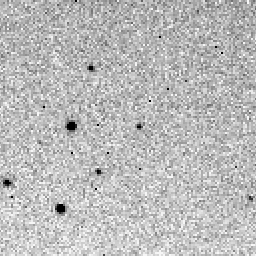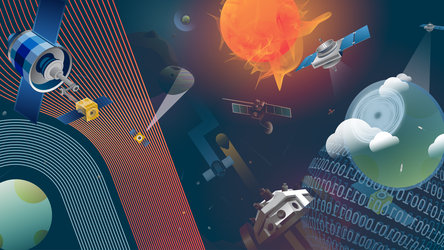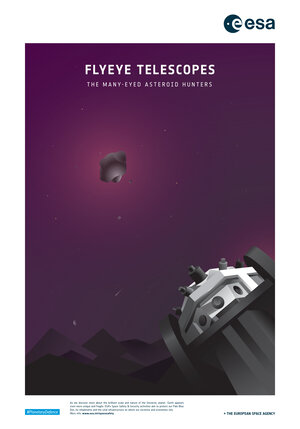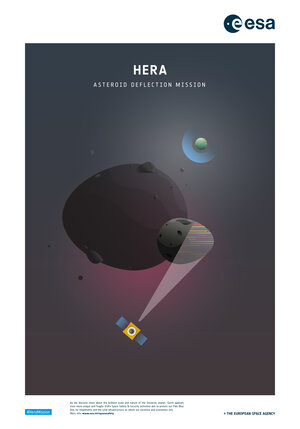About asteroids and Planetary Defence
Asteroids are ancient space rocks left over from the formation of the Solar System, thought to have brought complex molecules and possibly early life to Earth, billions of years ago.
The Chicxulub asteroid is probably the most famous space rock in the world. Although you may not know its name, its impact 66 million years ago is legendary – causing a mass extinction event that saw most non-flying dinosaurs and many other species wiped out.
Impacts from such large asteroids are immensely rare, but small- and medium-sized rocks are far more common in the Solar System and can still do serious damage.
These asteroids sometimes reach the ground, but even those that disintegrate in Earth’s atmosphere – like the one that caused the Chelyabinsk event in 2013 – can create explosive airbursts, with resulting shockwaves that may shatter glass, damage buildings and injure anyone who happens to be nearby.
The term ‘near-Earth object’ (NEO) basically refers to any natural object, like an asteroid, whose orbit brings it close to Earth. As of March 2019, we knew of more than 600 000 asteroids in our Solar System. Of these, around 20 000 are near-Earth objects, 800 of which are in ESA's risk list, meaning that they merit close follow-up observations.
Planetary Defence Office

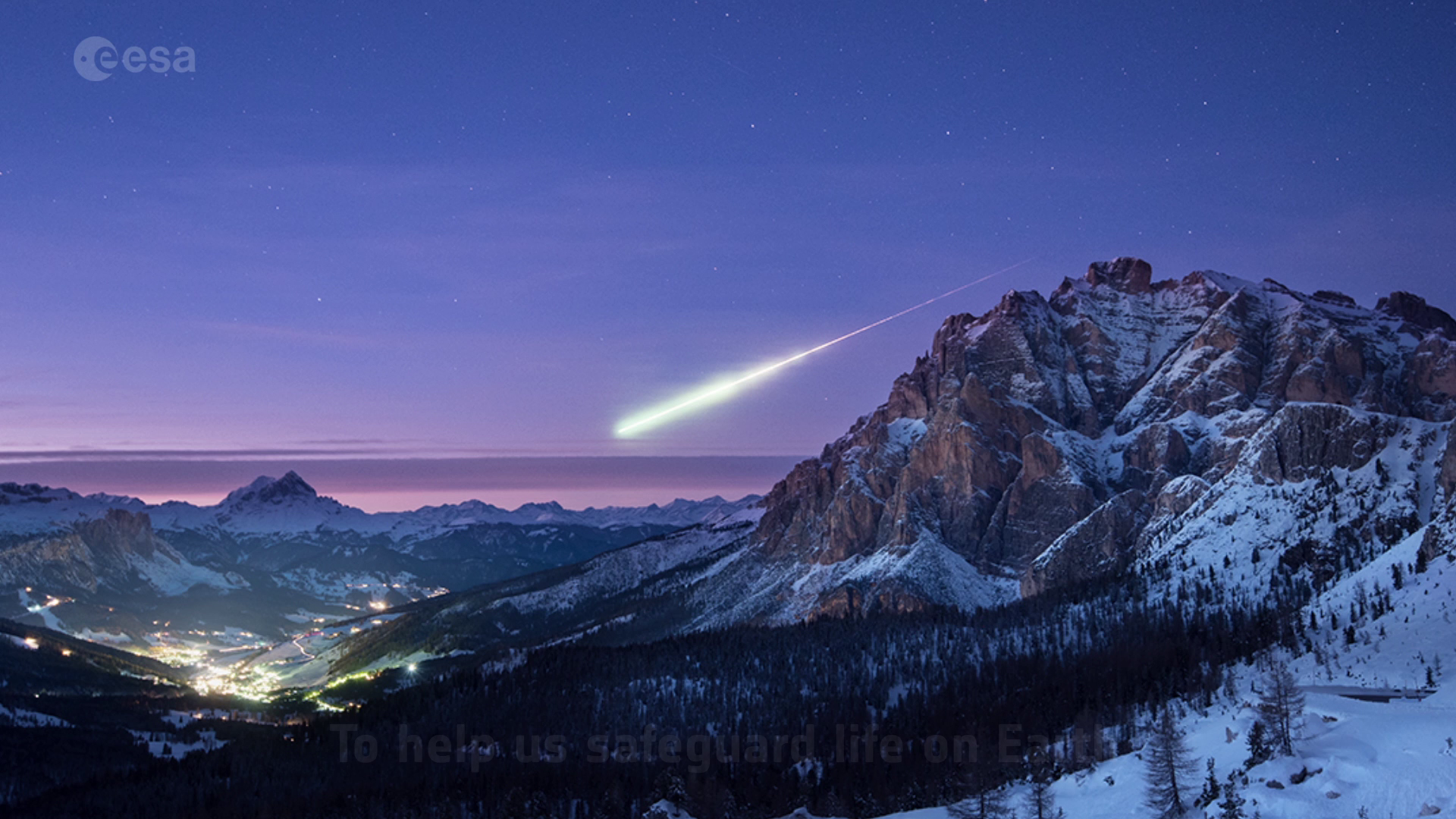
Access the video
ESA's Planetary Defence Office is an essential element in the Agency's space safety and security activities. The goals of the Office are to:
- Become aware of the current and future position of near-Earth objects relative to our planet
- Estimate the likelihood of Earth impacts
- Assess the consequences of any possible impact
- Inform relevant parties, e.g. national emergency response agencies
- Develop methods to deflect any risky asteroids
The Planetary Defence Office conducts regular observation campaigns to look for risky space rocks, predicts their orbits, produces impact warnings when necessary and is involved in potential mitigation measures. The office divides its work into three areas:
1. Observation
2. Data provision
3. Mitigation
1. Observation
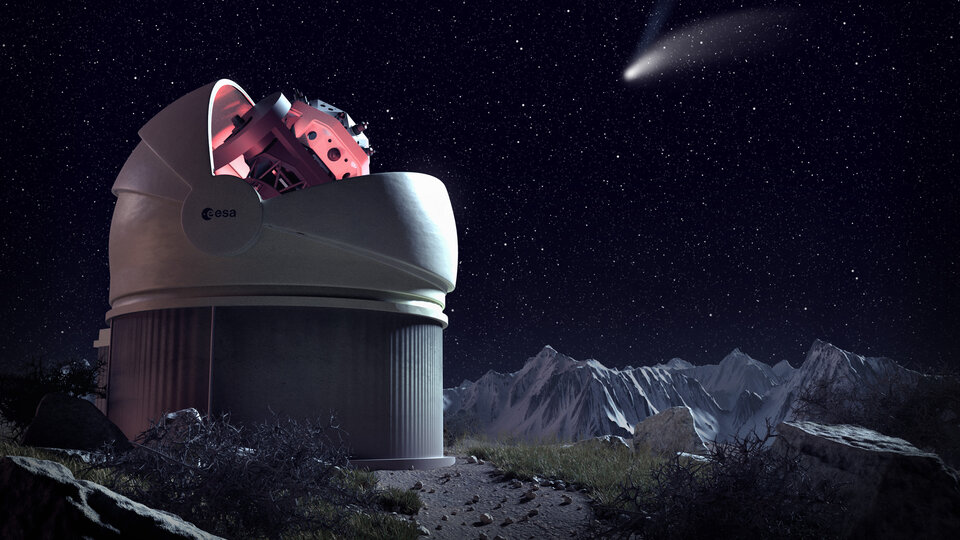
In order to become aware of the current and future position of near-Earth objects relative to our planet, we need eyes on the sky, scanning for potentially hazardous space rocks.
The Flyeye telescope
Every night, ESA’s planned network of Flyeye telescopes would scan the skies for rogue rocks, automatically flagging any that pose an impact risk and bringing them to the attention of human researchers.
Similar to the technique exploited by a fly’s compound eye, these bug-eyed telescopes split each image into 16 smaller subimages, increasing the total amount of sky that can be observed and expanding the ‘field of view’.
By placing one in the Northern and one in the Southern hemisphere, the entire sky will be scanned within 48 hours. Simulations have shown that about four asteroids larger than 1 meter can be detected every year before they will impact on Earth.
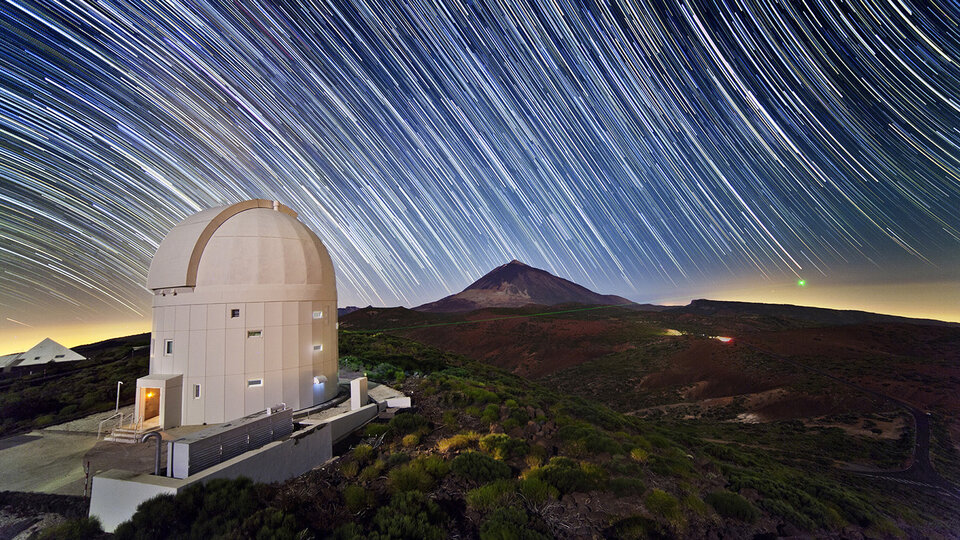
Test-Bed Telescopes
Two 56-cm 'Test-Bed Telescopes' (TBTs) will be primarily used to test the data processing currently being developed for the Flyeye telescope. One telescope in Madrid is currently being commissioned and a twin TBT is being shipped to La Silla in Chile, to be installed on site at ESA’s partner organisation, the European Southern Observatory.
Optical Ground Station
ESA's Optical Ground Station in Tenerife is equipped with a 1 m-diameter telescope and is the major optical facility used by ESA to follow up asteroid observations. It is typically used for four nights around new Moon for near-Earth object observations.
Sponsoring European observations
ESA also sponsors other national telescopes in Europe, like the Klet observatory in the Czech Republic and telescopes in Tautenburg, Germany, and Spain. The Agency also works alongside the 0.8m Telescopi Joan Oró in the Spanish Pyrenees, the 0.6m Observatoire des Makes, at Saint-Louis on Réunion Island, and with the International Scientific Optical Network (ISON).
2. Data Provision
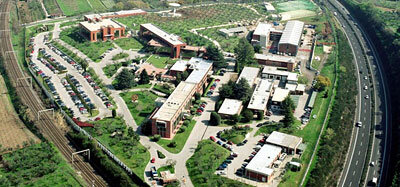
Data on near-Earth objects and risky asteroids is collected from telescopes and radar systems worldwide. This treasure chest of information is then fed to the Minor Planet Center, operated with the help and support of the International Astronomical Union (IAU) at Cambridge, Massachusetts, USA. It acts as a central clearing house for asteroid and comet observations.
The measurements collected there are gathered by ESA's Near-Earth Object Coordination Centre (NEOCC), whose aim is to contribute to and coordinate observations of small bodies in the Solar System – such as asteroids, comets and even minor planets – and to evaluate and monitor the threat posed by any that come near Earth.
Based at ESRIN in Frascati, Italy, the NEOCC is the central access point to an entire network of European asteroid data sources and information providers. Every day, the coordination centre uses this information, gathered from across the globe, to provide orbit determination, impact monitoring, data provision and risk analysis.
Find out more about ESA's Near-Earth Object Coordination Centre here.
3. Mitigation
If an asteroid is determined to be potentially dangerous, emergency response agencies across the globe are informed of impact risk, and given support and advice from the NEOCC and other organisations.
Equipped with data on the small bodies in our Solar System and their chance of impacting our planet, the Planetary Defence Office is working to mitigate these risks.
The fireball camera
A space-based fireball camera is being developed by ESA, along with tools to simulate impacts, their effects on Earth and investigate deflection techniques.
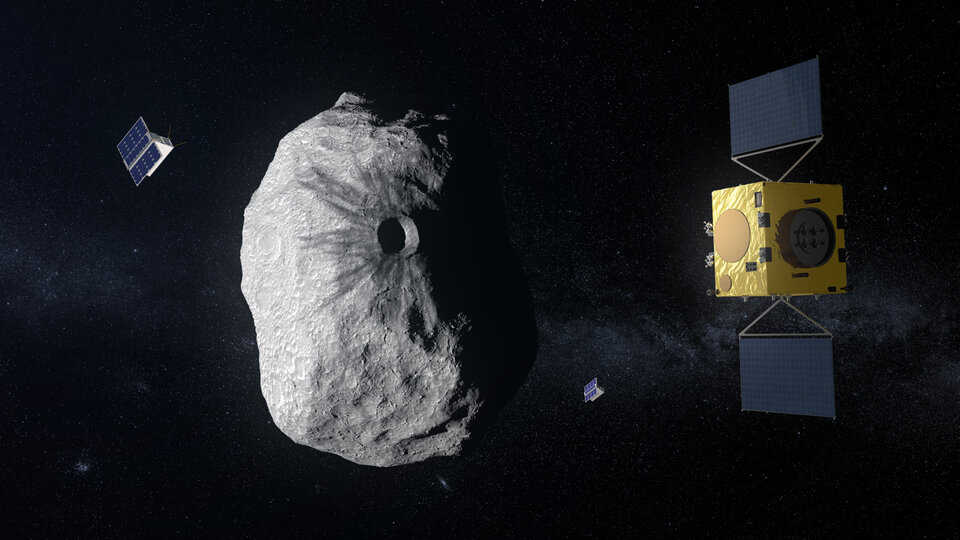
Hera Mission
ESA’s planned Hera mission, named after the Greek goddess of marriage, will be humankind’s first probe to rendezvous with a binary asteroid system – a little-understood class making up around 15% of all known asteroids.
Hera is the European contribution to an international double-spacecraft mission called AIDA. NASA will first crash its DART spacecraft into the smaller of the two bodies, ‘Didymoon’, modifying its orbit around the primary asteroid, ‘Didymos’, by a tiny amount. Hera will then follow-up with a detailed post-impact survey that will turn this grand-scale experiment into a well-understood and repeatable planetary defence technique.
While doing so, Hera will gather crucial scientific data, helping scientists and future mission planners better understand asteroid compositions, structures and behaviours in response to a ‘kinetic impact’.
Space safety at ESA
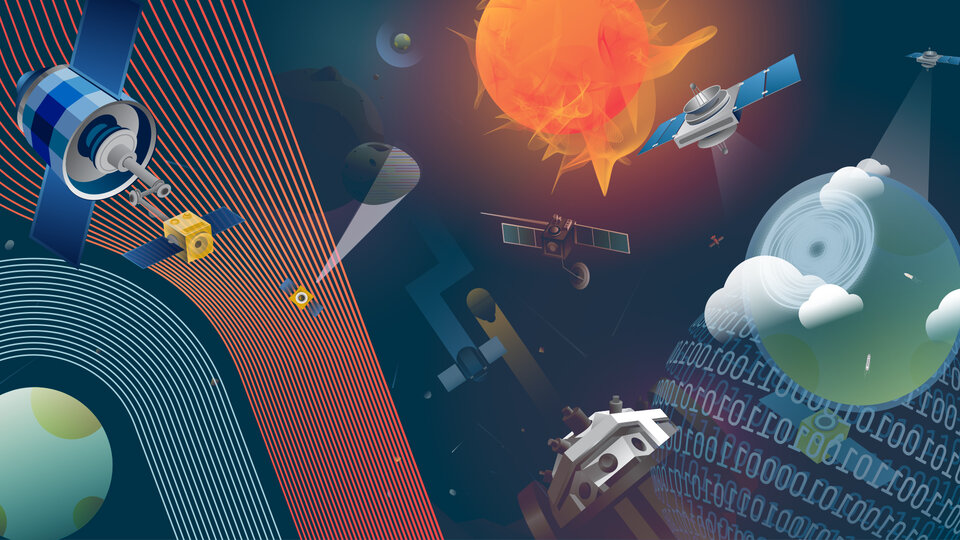
Living close to an active star, in a Solar System filled with ancient and fast-moving space rocks, on a planet that is becoming increasingly surrounded by discarded satellites and their debris, comes with a plethora of possibilities for something to go wrong.
ESA’s Space Safety Programme is working to mitigate and prevent the impacts of hazards from space, protecting our Pale Blue Dot, its inhabitants, and the vital infrastructures on which we have become so dependent.



